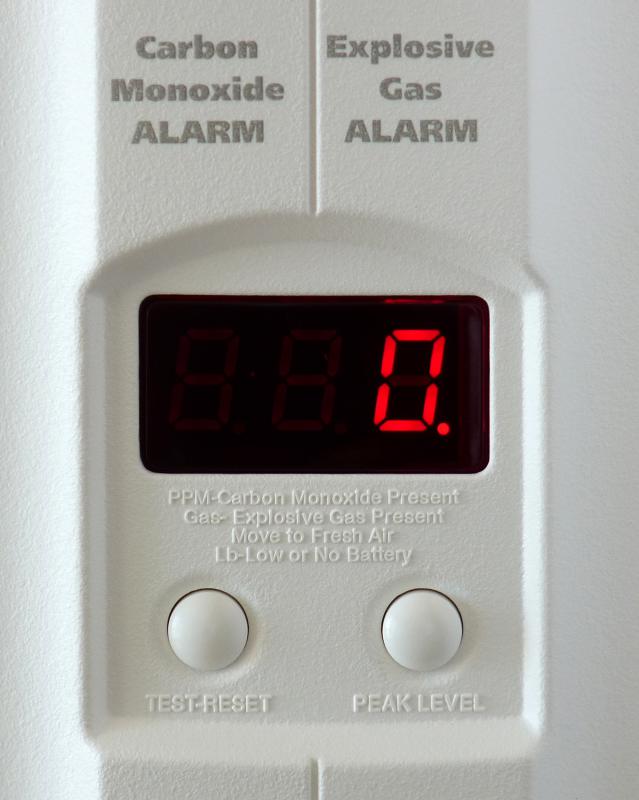At WiseGEEK, we're committed to delivering accurate, trustworthy information. Our expert-authored content is rigorously fact-checked and sourced from credible authorities. Discover how we uphold the highest standards in providing you with reliable knowledge.
What is a Single Gas Detector?
When people talk about a single gas detector, they usually are referring to a gas detector that can identify only one type of dangerous gas in a home. A common kind of single gas detector is the carbon monoxide detector, but single gas detectors also can specialize in identifying other dangerous gases. Each single gas detector can detect only one type of gas, so homeowners who seek the best protection might prefer to purchase a multi-gas detector that can detect several gases rather than buying several types of single gas detectors.
One of the most popular types of a single gas detector is that which measures carbon monoxide. Carbon monoxide is a colorless and odorless gas, but it's also potentially fatal. People succumb to carbon monoxide poisoning because it is extremely difficult to detect without a gas detector. A strategically placed carbon monoxide single gas detector can easily alert a homeowner when this dangerous gas is present at toxic levels in the home. Homeowners might consider placing a carbon monoxide detector in or near all bedrooms as well as by fireplaces, furnaces, garages and other places where carbon monoxide commonly collects.

Another gas that a single gas detector commonly can detect is radon. Radon also is colorless and odorless, and it has radioactive properties and can contribute to severe health problems such as lung cancer. Radon results from uranium breaking down in soil. As a result, a single gas detector that specializes in identifying radon might be best placed in basements, lower levels of homes or any rooms that have contact with soil.

A single gas detector can do a good job of alerting homeowners when a dangerous gas is present, but mutli-gas detectors have the ability to identify several types of dangerous gases. These types of detectors can be useful especially to those who live in areas that having reputations for harboring unhealthy gases. People who live by landfills, refineries and power plants can benefit greatly from multi-gas detectors, because they can be equipped to identify many of the dangerous gases that routinely are emitted from such places.
AS FEATURED ON:
AS FEATURED ON:













Discuss this Article
Post your comments